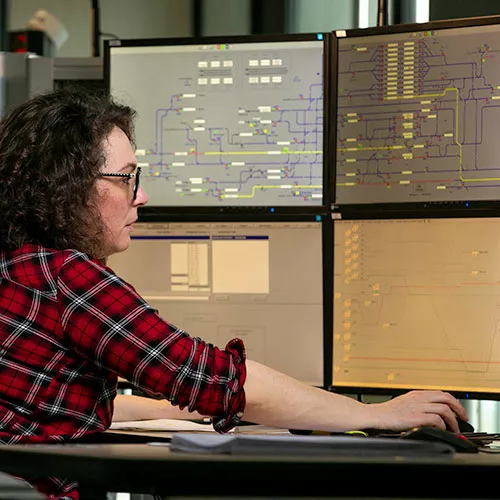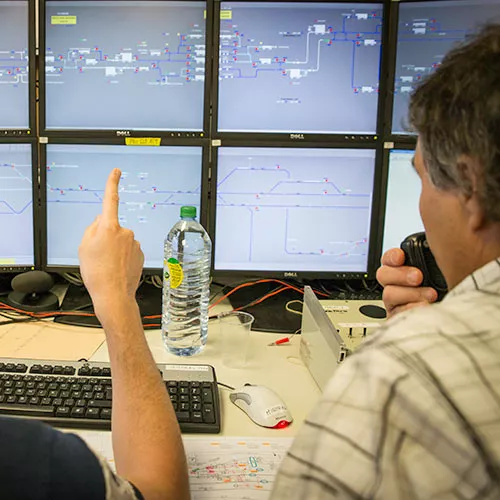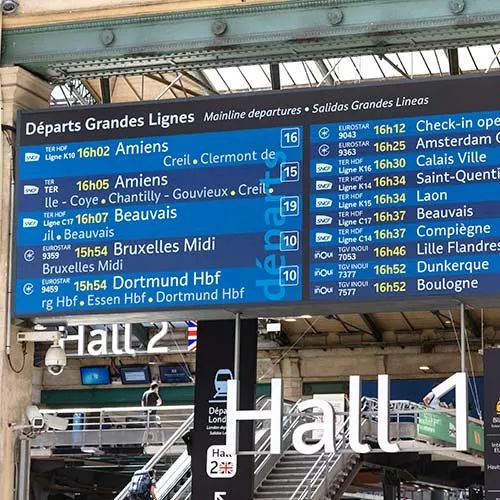How rail traffic management really works
It takes meticulous coordination to ensure train services operate smoothly and safely. Discover how we keep them running like clockwork.

Maintaining safe following distances
Trains travelling in the same direction on the same track must maintain a safe following distance. To ensure this, the railway tracks are divided into sections known as “blocks”. Block sizes vary, averaging 1,500 metres long, and are marked by signalling lights at both ends. Like the highway code, they use a three-color traffic light system:
- Green indicates that drivers can enter the block.
- Amber signals that they should slow down.
- Red requires them to stop the train.
Cab-signalling on high-speed trains
This block system enables drivers to maintain safe following distances and prevents one train from catching up with another. Trains travelling on high-speed lines are equipped with onboard cab-signalling. As trackside signal lights are not visible on a TGV travelling at speeds of over 300 km/h, cab signalling displays instructions directly on the driver’s dashboard, informing them of the required speed and safe following distance.

Planning rail routes months ahead
Train routes, or “slots”, are determined several months in advance. The term “slot” refers to the precise scheduled day and time when tracks are allocated to a particular train between points A and B for a fixed period.
Schedulers in specialized departments allocate these slots. Their responsibilities include setting train schedules from departure to arrival stations (incorporating stopovers), and programming maintenance works.
Delayed trains lose priority
When a train is running late, it is no longer in its “slot”. In other words, it no longer respects the “blocks” allocated to it for a specific period. If a train is delayed at the departure station, it no longer has right of way. It will only be allowed to depart when it can be integrated into circulating traffic without disrupting other trains.

Diverting a train—how does that affect you?
When traffic is disrupted, your train’s route may be changed at the last minute, especially if service is suspended. For instance, if a power supply issue affects the line between Laval and Rennes (northwestern France), all traffic between the two cities will be suspended while repair teams solve the problem. If possible, trains—including yours—will be diverted to bypass the affected area. This will usually extend your journey time, meaning you’ll arrive at your destination later than planned.
Share the article